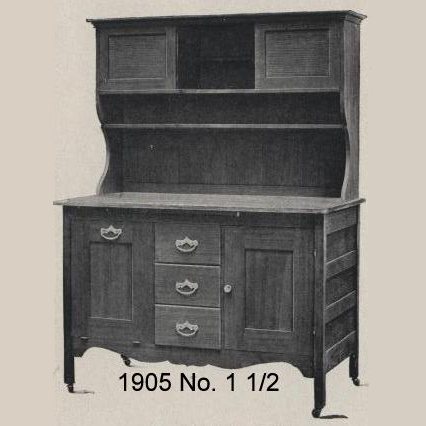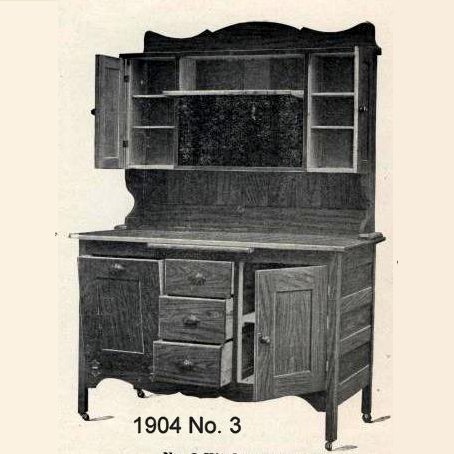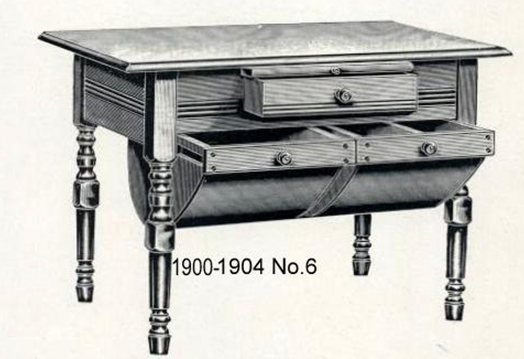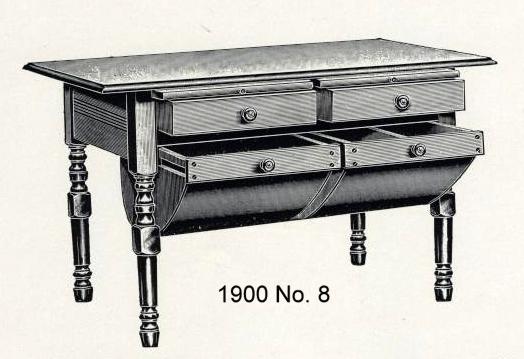Resources
Hoosier Cabinets
quality experience
What Is A Hoosier Cabinet?
The Hoosier cabinet is a cupboard or free-standing kitchen cabinet originally manufactured by one of a number of Indiana cabinet makers in the first few decades of the 20th century. It was exceedingly popular because most houses constructed at that time did not have built-in custom cabinetry. Coppes Napanee built the Dutch Kitchenette, which was our own version of the Hoosier cabinet.

Material
They were usually built from solid wood with a metal, wood, or slate worktop.

Storage Space
Almost all Hoosier cabinets had pull-out shelves in their base cabinets.

Kitchen Innovation
Innovative features included built-in flour sifters, a spice rack with ant-proof glass jars, and a built-in grocery list on the door.

Counter Space
They offered 40 inches of counter space, which was uncommon at the time.
Dating A Hoosier Cabinet
It is difficult to identify the exact date of a Hoosier cabinet manufactured by Coppes Napanee and there are no hard and fast rules to apply. However, the type of finish, metal ID tag, how it was assembled, and the style of the flour bin will give you some clues.
Type of Original Finish
The earliest cabinets had a clear finish, such as shellac or lacquer. Painting the cabinets did not start until the 1920s. You could still order a cabinet with a clear finish (or no finish) after the cabinets started to be painted. The use of a clear finish required a better quality of wood in the construction of the cabinets. Oak was the most common exterior wood used in Coppes cabinets during this clear finish era of cabinet manufacture.
Cabinet Assembly
Assembly can be a determining factor in which company manufactured your cabinet. Here are photos of the type of side bracket used on early Coppes Napanee cabinets and a detailed photo showing the way the top joint was put together. Remember: the methods changed, the styles changed, the materials changed, and using just one factor in judging the age of a cabinet may not be accurate.
Metal Tag On Cabinet
This tag changed when the company changed its name or a “special style of cabinet” was manufactured.
1898-1902 We have no knowledge of the exact type of label on the cabinet’s mfg. by The Nappanee Furniture Co. Likely, it would have been a heavy paper label tacked on the back.
1902- 1912 Coppes, Zook & Mutschler Co.. The company was already using a misspelling on the town Nappanee on labels. At the time it was illegal to use the proper name of a town in advertising a product.
Approximately 1913 – This is a very rare Coppes Bros. and Zook cabinet nameplate.
1913-1935 Coppes Bros. & Zook – Brass with blue background or Aluminum with black or blue.
After 1936 – Coppes Inc.
1936-37 Special label used on patented model cabinet.
Another type of label you may find is a paper label glued on the back (both top & bottom). We have seen labels show the model number, the finish style or color, and possibly the store that sold the cabinet or the customer. The early cabinets may have the model and other information handwritten with a dark chalk or black ink type brush.
Style of Flour Bin
The exact location of the smaller flour bins varied in the cabinets. Remember, Coppes likely purchased flour bins from a wholesaler. Other companies could and may have purchased the same flour bins.
Coppes’s Role In Hoosier Cabinets
Coppes Napanee was a well-known manufacturer of Hoosier cabinets, along with other major producers like the Hoosier Manufacturing Co., and built them for almost 40 years. We’ve identified over 80 different producers of Hoosier cabinets to date, of which we are the only one still in operation.


